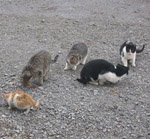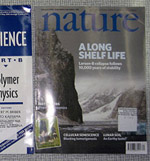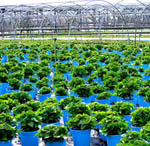Prioritizing habitat preservation in a rapidly suburbanizing area
 Planning,
Planning,  Preservation,
Preservation,  Technology-GIS
Technology-GIS  Lynx rufus on a wire. Image credit, NASA... seriously.Scientists have developed a tool to help small conservation groups prioritize properties for protecting wildlife habitat under intense development pressure.
Lynx rufus on a wire. Image credit, NASA... seriously.Scientists have developed a tool to help small conservation groups prioritize properties for protecting wildlife habitat under intense development pressure.
They tested the approach on the bobcat on Kiawah Island, a rapidly suburbanizing area of South Carolina, and published their experiences in the journal Wildlife Management. However, the approach is likely applicable to a wide range of species and geographic settings.
For organizations like land trusts that protect land by purchasing properties or the underlying development rights, funding and staff resources can be extremely limited - especially in today's economic climate when furlough days are more common than promotions.
So prioritization tools like the one developed by Shane Roberts and study co-authors can be extremely helpful in getting the most bang for the buck by identifying the properties with the highest conservation value for wildlife protection.
"Our objective was to develop a biologically based, simple, effective tool to help a local land-trust organization prioritize and periodically reassess their land preservation opportunities," the researchers write.
"Few land trust organizations have the resources available to employ a full-time biologist, these tools should be effective in their purpose but also easy to apply by land-trust staff with minimal to moderate ecology and GIS training."
Their approach involved developing a habitat suitability index for the bobcat to rate the conservation value of undeveloped land on the island.
They calculated the index based on three component metrics - a feeding suitability index, a cover suitability index, and a den suitability index - all developed based on best available knowledge about the requirements of the bobcat.
For example, the feeding suitability index for the bobcat, which feeds largely on cotton rats, is based on an optimal habitat 90% grass, forb, or shrub ground cover with 50–70% of this vegetation in grasses or forbs.
Using aerial imagery the researchers mapped out the different land cover types on the island. Using a combination of the aerial imagery and ground surveys, they scored the habitat suitability of each land cover type. They then overlaid a map of the land cover types with a map of the undeveloped parcels on the island to come up with a habitat suitability value for each property.
The methodology is more complicated than I am presenting it here, but fortunately the researchers have done an excellent job of writing up an extremely detailed methods section. So I highly recommend that any interested organizations check out the original study.
The authors concede that the methodology is based on the assumption that preserving habitat for one flagship umbrella species - in this case the bobcat - can satisfy the requirements of a larger suite of species in the area - an assumption that has been questioned by some scientists. However, the authors believe that this assumption is probably safe for at least Kiawah Island.
The approach could probably benefit from including other metrics relevant to land conservation such as land values and the relative development threat that properties face.
In applying the methodology they found that the few large undeveloped parcels had the highest scores. This brings up the question of whether in such a small-scale setting, these prioritzation tools just confirm what staff intuitively already knows.
Even when this is the cause though, this type of exercise can be beneficial. The authors write,
"In addition to the ecological benefits of prioritizing preservation opportunities with [the habitat suitability index], we found that our assessment of bobcat habitat suitability was valuable to the local land-trust organization in their public education and fund-raising activities, resulting in additional opportunities for land preservation"
--by Rob Goldstein
Roberts, S., Jordan, J., Bettinger, P., & Warren, R. (2010). Using Bobcat Habitat Suitability to Prioritize Habitat Preservation on a Suburbanizing Barrier Island Journal of Wildlife Management, 74 (3), 386-394 DOI: 10.2193/2008-431




Reader Comments